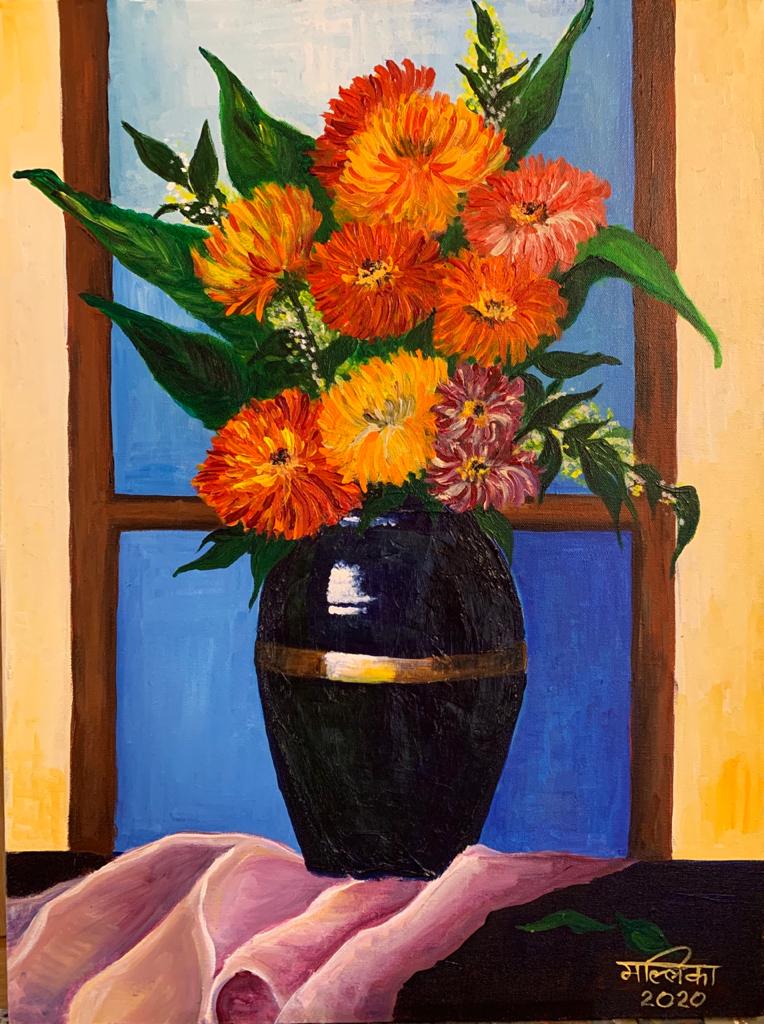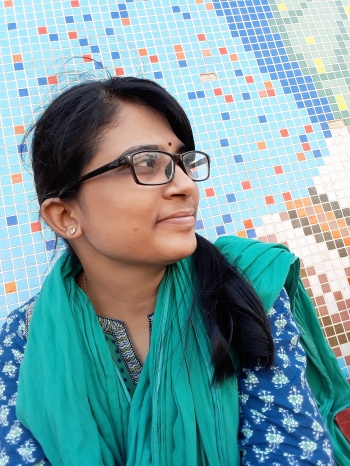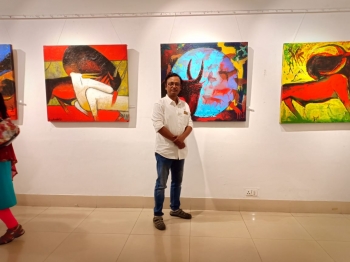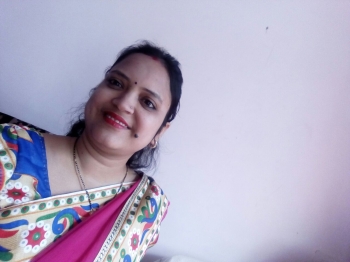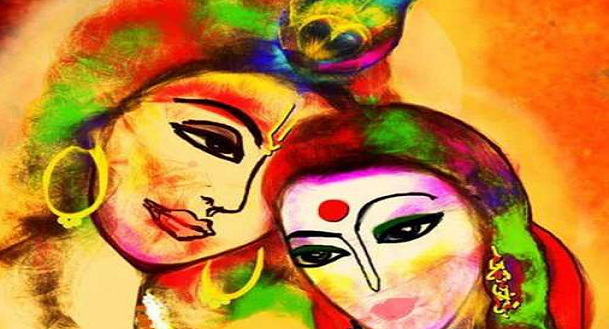
Ever wondered why Holi is celebrated with great fervour in the villages around the birthplace of Krishna? Or, why most houses are decked up with Radha-Krishna paintings during this festival of colours?
It is because Holi is inextricably associated with Radha and Krishna – one of the most intense love stories in our mythology ever. In fact, this festival is a celebration of the eternal romance of this beloved couple!
Let’s dive deeper into this connection and explore the several legends and rituals related to Holi.
It is believed that when Lord Krishna was young, he often complained to his mother Yashoda about his dark complexion and pondered why Radha was so fair.
One day to cheer him up, his mother playfully suggested that he can change the complexion of Radha to any colour he wanted by smearing colour on her face.
Fascinated by the idea, Krishna immediately ran to smear Radha’s face with colours and thus, introduced the colourful festival of Holi.
Even to this day, Holi retains its flavor of naughtiness wherein youngsters engage in fun-filled activities and dancing, reminiscent of Krishna playing pranks and doing Raas-Leela with gopis. Also, the decor at various places features sensuous paintings of Radha Krishna.
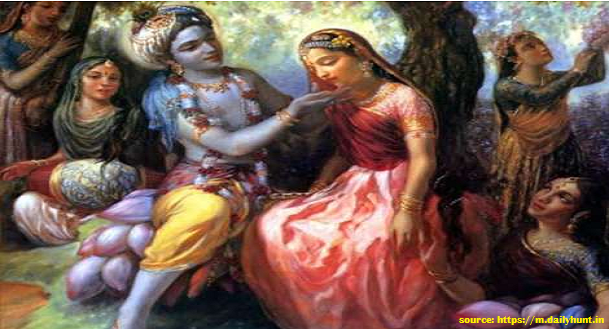
Another interesting ritual related to Holi is of ‘Lathmar’ Holi played in the Barsana region of Uttar Pradesh.
This is how the story behind this festivity goes like, Lord Krishna visited Barsana to meet Radha for the Holi celebrations. Owing to his mischievous nature, he teased Radha and her friends a lot. The girls got a little offended and decided to teach Krishna a lesson for his behaviour wherein they chased him away by beating him with thick traditional sticks.
Keeping in tune with the legend, this tradition is still followed by the inhabitants of Krishna’s village (Nandagaon) and Radha’s town (Barsana). Men from Nandgaon visit the town of Barsana every year, only to be greeted by thick traditional sticks (lathi) of the women there. The women chase them down and hurl sticks at the men, who try to shield themselves and try not to get caught.
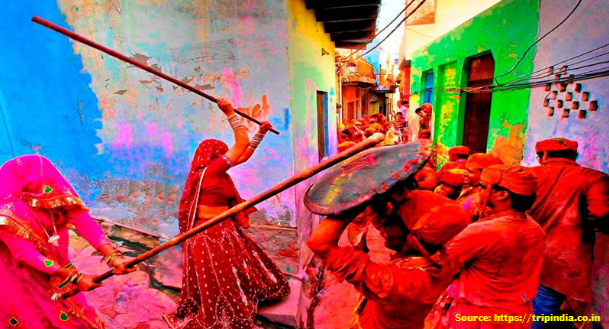
Another popular story elaborating on how the festival of colours got its name is of ‘Holika’.
Hiranyakashyap, king of demons had received the boon of immortality from Lord Brahma. As his power grew, he began objecting to people’s belief in the divine power but could not wane away his son ‘Prahlad’ from worshipping Vishnu. Overpowered by his arrogance, he asked his sister ‘Holika’ who was blessed with the boon to enter the fire unscathed, to sit on a pyre with the young Prahlad. Having a firm belief in His God, Prahlad kept chanting the name of Vishnu and remained unaffected by the fire while demoness Holika gets incinerated.
From that day on, the burning of Holika is an important part of Holi celebrations, which signifies the end of evil. This is why we have the bonfire on the eve of Holi.

The last legend is related to using abuses or rude insults and playing pranks during this festival of colours. It is about an ogress, Dhundi, who was a troublemaker in the kingdom of Prathu. As she was endowed with the armour of invincibility by Lord Shiva, no one could suppress her. However, the only way to get through her boon was by a crazy group of boys.
Therefore, the village youngsters hurled abuses and insults to chase away the ogress on the day of Holi. As a commemoration, children play pranks and hurl abuses in some parts of the country on the occasion of Holi.
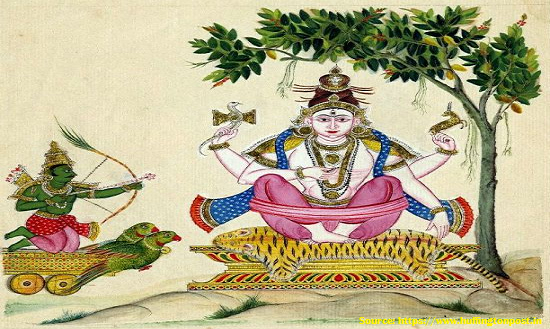
Wrap Up
Holi is celebrated in different ways across the country with full enthusiasm and a sense of bonhomie.
But, this boisterous festival of colours has exuberant and exciting celebrations lasting for more than sixteen days in Braj Bhoomi (Mathura, Vrindavan and Barsana) owing to its connection with the eternal love of Radha-Krishna.
So, now you know the stories behind celebrating Holi. It’s time to get drenched in the colours of life.
Happy Holi!












